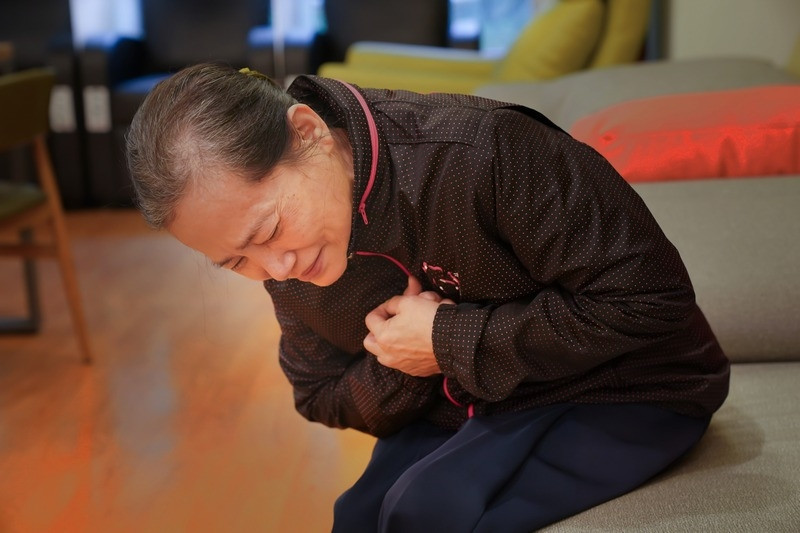Once acute myocardial infarction occurs, symptoms such as chest tightness and shortness of breath will appear; schematic diagram.
(Provided by Taipei Tzu Chi Hospital)
[Reporter Weng Yuhuang/New Taipei Report] 57-year-old Ms. Zhang suffers from high blood pressure, high blood fat, and diabetes. She had a sudden acute myocardial infarction 8 years ago. After being placed in the hospital with 3 coronary drug stents, her condition was stable with follow-up drug treatment. Ms. Zhang did not return to the clinic for a long time. This year, she found coronary artery blockage again due to chest tightness. She suffered a sudden myocardial infarction before hospitalization and died suddenly outside the hospital. After electric shock first aid, her heartbeat was restored and the coronary artery was opened. Only the brain tissue was hypoxic, and she is still in a deep coma. state.
Zhang Hengjia, vice president of Tzu Chi Hospital in Taipei and a cardiologist, pointed out that acute myocardial infarction is caused by the activation of platelets in the vessel wall due to the rupture of atherosclerotic plaque, resulting in acute thrombus in the vessel wall, resulting in complete blockage of coronary artery blood flow. Once acute myocardial infarction Attack, in addition to symptoms such as chest tightness and shortness of breath, it is very likely that ventricular fibrillation will occur within the first hour, which is the so-called sudden cardiac death syndrome.
Please read on...
The medical treatment in Taiwan is well developed, and the treatment effect of the first myocardial infarction is often good. The mortality rate is about 3-7%. 10-20%. If combined with heart failure, the survival rate within 5 years is only 50%.
The risk factors causing myocardial infarction can be divided into two categories, one is the established risk factors, such as age, gender and family history; the second is the modifiable risk factors, according to research, eating habits, living habits, hypertension , hyperglycemia, hyperlipidemia, obesity and smoking are controllable factors.
Zhang Hengjia pointed out that for patients who have had myocardial infarction, secondary prevention needs to be more rigorous than patients who have never had myocardial infarction. First, they must strictly control their diet and develop regular exercise habits. Drugs must also be taken as prescribed by the doctor, and they must absolutely quit smoking To prevent the second recurrence of myocardial infarction, if these controllable risk factors can be strictly implemented and reached the standard, the risk of second myocardial infarction can be reduced by more than 80%.
Zhang Hengjia, vice president of Taipei Tzu Chi Hospital and cardiologist.
(Provided by Taipei Tzu Chi Hospital)
☆Health news will never be missed, click like to follow the fan page.
☆For more important medical news, please go to Liberty Health.com.
keywords
myocardial infarction
hypertension
heart failure
coronary artery
Ventricular fibrillation
related news
